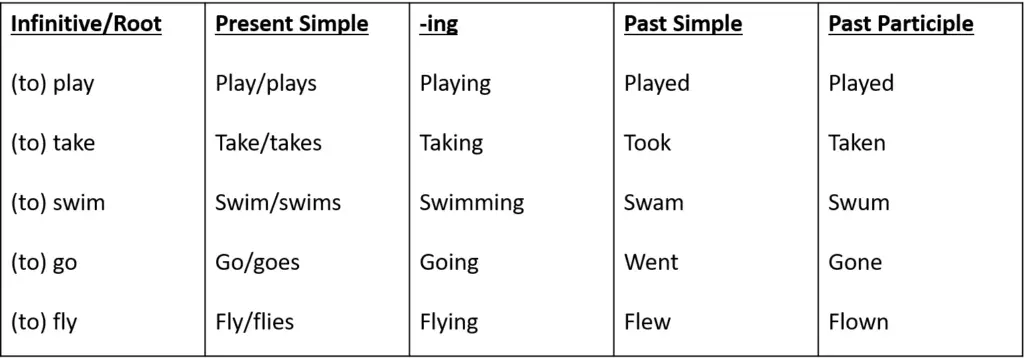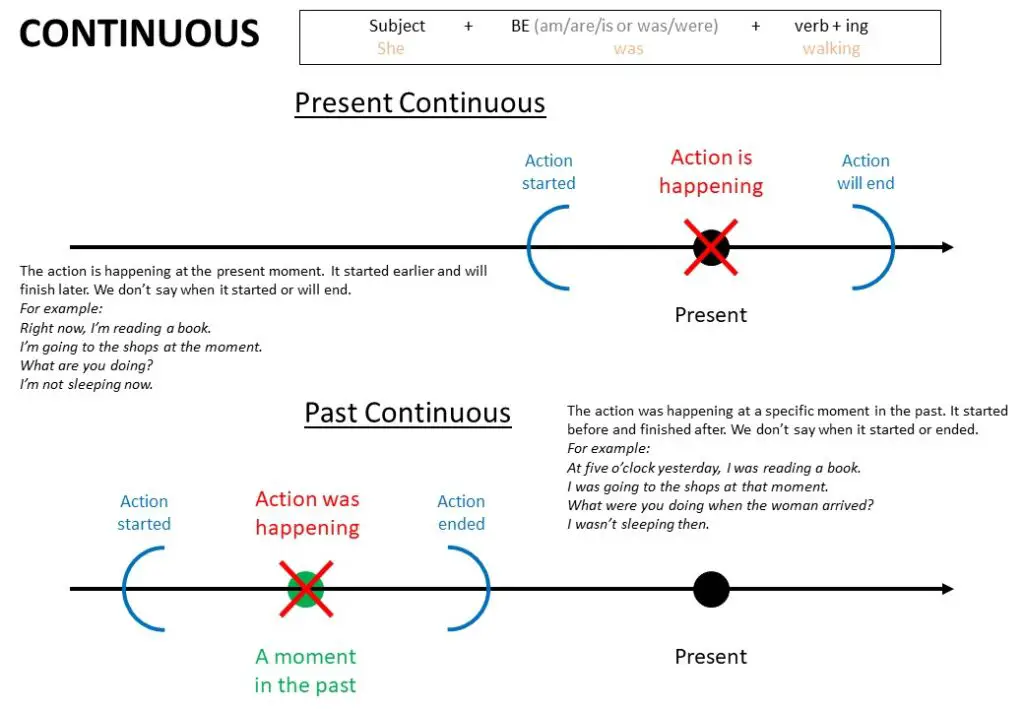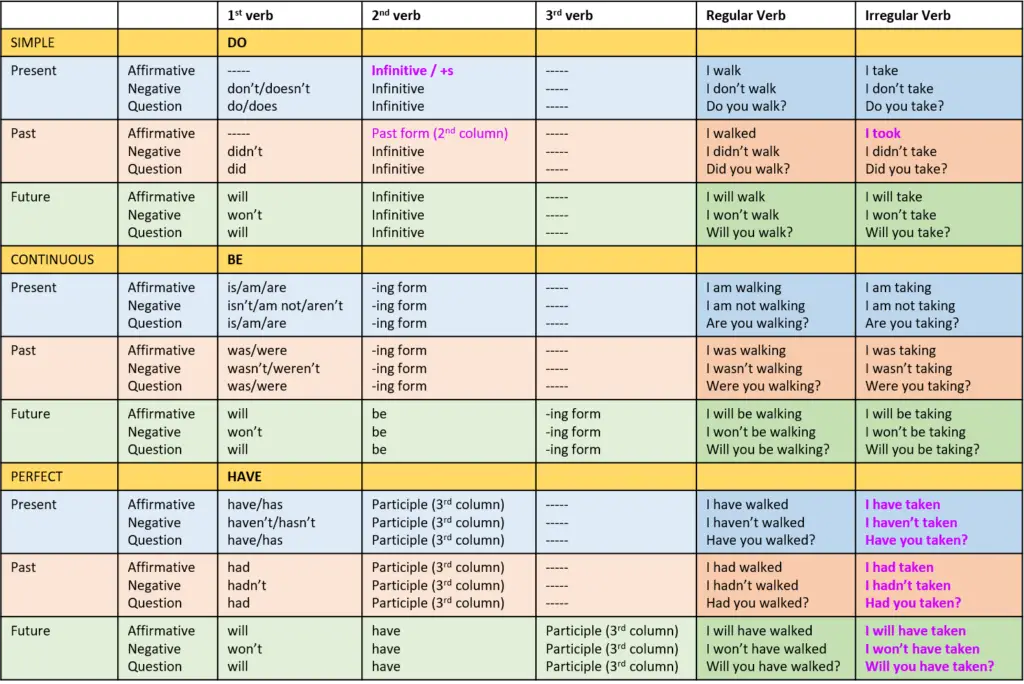Grammar. A single word which can cause disgust, fear, and apathy in both students and teachers. It’s almost always met by a groan. And it’s no surprise given the traditional approach of endless worksheets, abstract explanations and irregular verbs. So many irregular verbs.
But it’s important. If words are the bricks, grammar is the mortar that glues the bricks together to make the metaphorical house of language. Without it, the house will crumble.

So how can we overcome our distaste for grammar and make it a valuable part of the EFL/ESL learning experience? That’s what this guide is about. Hopefully, by reading this article you can frame grammar in a different light, and help your students not only excel at it, but even enjoy it (or at least hate it less).
The guide is aimed at private EFL/ESL tutors who teach individuals or small groups. However, many of the concepts apply to those teaching larger classes.
Grammar teaching is just one part of being a great EFL/ESL tutor. And this article is just one of a series of super helpful guides I’ve written about becoming the best tutor possible.
Problems with grammar in the EFL/ESL classroom
Rules, verb lists and worksheets packed with fill-the-gap exercises. Sound familiar? That’s how grammar is often taught around the world. Teachers explain the rules, and students practice them. They also have to memorise all those irregular past tense and past participle (third column) verb forms.
Not very exciting. So why don’t teachers do better? Well, to be fair, some do. There are plenty of brilliant EFL/ESL teachers out there who make grammar bearable, and even fun. But it’s hard. Taking abstract concepts and making them engaging takes creativity and energy.
And with kids, it’s a huge challenge to get them to wrap their heads around something like the difference between present perfect and past simple.

That’s why the easier route is to get a few worksheets and have students do lots of mechanical practice. When students do worksheets, they can see the pattern and will learn what they have to do to get the question right, and you can suppose they’ve understood the concept.
But have they really? Or are they just following the formula? And even with exciting games and engaging activities where students seemingly practice grammar, are they truly internalising the concept, or is their learning superficial?
Over and over again I’ve seen students perform well in a class about a grammar idea, nail an exam, then a month later look blankly at me when I bring it up again.
Not good enough. So let’s fix it. Our starting point is to consider what grammar your students should learn, then we’ll look at making it stick, and guidance for different ability levels. At the end, I’ll share some fun activities you can use in class.
Teaching appropriate grammar
Before teaching anything, you need to figure out what students already know, what level of complexity they can handle, and how much grammar they actually require.
The best way to do this is with a needs analysis. This is a process you should do when you start any new class and is essential for future planning.
If you’re unfamiliar with the idea of a needs analysis, or want to read more about it, check out my article Needs Analysis for Private EFL/ESL Lessons: 12 step guide.
First of all, consider their current English knowledge. If they’re absolute beginners, it’s obvious you shouldn’t be teaching them modal perfects or the third conditional.
On the flip side, you need to challenge advanced students to progress. Target their zone of proximal development (the stuff they can do with guidance but can’t quite do on their own yet).
But ability isn’t the only thing to take into account. Age, maturity and attitude to learning is important, too. There are three broad categories your students can fall into.
- Children aged 12 or under who are at an early stage in their English learning journey.
- Teenagers (13-18) or adults who may be beginners or advanced, capable of grasping some abstract concepts but aren’t too academically focused.
- Adults of any level who can learn theory quickly.
For each category, you should pitch your grammar teaching differently, altering how direct your instruction is.
What do I mean by direct instruction?
Direct instruction is explicitly teaching concepts and rules. It’s where you lay out the theory, give some examples, and help your students understand it in an academic, intellectual sense. Think of textbook explanations.

Indirect instruction is where you teach students through immersion and repeated exposure. It’s the way native speakers learn, through experience. This often takes the form of listening to songs, playing games, and doing carefully crafted activities.
There’s no one best approach. It’s a spectrum, with most teaching falling somewhere between the two camps, mixing a little of both.
For each of our three categories:
- Children under 12 won’t react well to direct instruction. Strongly favour indirect instruction to allow concepts to take root and engagement to stay high.
- Teenagers and some adults work best with a mixture. Some focused but not extensive direct instruction is a good way to formalise some of the indirect instruction you do and allow them to understand the theory behind why they say things in a certain way.
- Academically minded adults benefit from direct instruction. They can apply the theory to their practice quickly. However, don’t exclude indirect instruction completely – it can be a great way to introduce or reinforce topics.
The final thing to consider when approaching grammar is how much your students actually want to learn.
For private classes, it’s vital to get this right. By performing a needs analysis, you should know what their goals are and why they’re paying you to be there.
In many cases, I’ve found students (or their parents) don’t want me to teach them lots of grammar, because they do (or did) a lot of that at school. Instead, they want to focus on speaking fluency. Or just being around a native speaker and absorbing language through games and activities.
To learn how to give classes focused on speaking, read my article: 7 Steps for Incredible Private EFL/ESL Conversation Classes.
So unless your students have specifically told you they want to improve their grammar, avoid falling into the trap of going too hard with direct instruction. They’ll get bored and frustrated. Instead, you can still improve grammar by using some careful indirect instruction, while boosting other English skills at the same time.
Making grammar stick
Take it slow.
The biggest mistake you can make when teaching beginners is to rush through grammar. If you go too quickly, students don’t internalise anything. You end up with the problem mentioned earlier that they seem to understand the pattern when you teach it, but can’t remember anything a month later.
With beginners especially, you’re setting them up for failure in the future; things will fall apart when you move on to more advanced ideas.

Don’t be tempted to move on to a new topic the first time they seem to grasp it. Spend time reinforcing and solidifying. Use robust and varied assessment methods (not just marking worksheets) and approach the concept from different angles.
What you really want to avoid is students learning the “trick” to getting answer right without fully understanding.
Here are some ways to stay focused on a topic for a while without things getting stale:
- Approach the topic through the lense of all 4 skills: reading, listening, speaking and writing.
- Get students to research and present their own explanations.
- Use lots of indirect instruction with activities that involve the grammar point, but don’t make it the entire focus.
- Relate it to the interests of your students (which you found out in the needs analysis and ongoing rapport).
Of course, at some point, you’ll have to move on. And you can do so knowing the concept is firmly embedded in their mind, ready to be built upon.
What should you teach beginners?
Start with the different word types. Nouns and verbs first. Adjectives and other types can come a bit later.
Nouns are things. Spend time on this, even with adults who probably already know. Make sure your students are familiar with common nouns (learning new vocabulary) and basic subject pronouns (I, you, he/she/it, etc.)
With nouns, you also want to teach articles (the and a/an).

Then move to verbs – actions. Again, there’s an element of vocabulary here. Focus on active verbs like run, play, write, say, etc. Also, teach the three most important verbs in English: to be, to do and to have.
Auxiliary verbs are crucial to making sentences, so you’ll have to introduce them, too. With older students, you can do this through direct instruction, but with kids, it’s better to show them examples.
Label different word types with colours. I like to make nouns dark blue, pronouns light blue, active verbs red and auxiliary verbs orange.
Once you’ve spent plenty of time on nouns and verbs, you can start making simple present tense sentences. Using colours allows students to visualise word order.
The girl
plays
tennis
With a negative:
Iron Man
does not
write
poems
As well as colours, you could also use shapes or gestures to identify the different types of words in a sentence, and through repeated exposure, students will internalise the pattern of Subject Verb Object.
The conjugated third-person verb (with the -s) is tricky to teach, especially to young learners. You can do it through indirect instruction, but it’ll take some time. With older students, it’s a great candidate for direct instruction as they can understand the concept of third-person singular.
Once you’ve got down basic sentence structure, you can move on to possessives (my, your, etc.), making questions (switching the auxiliary verb and the noun/pronoun subject) and adjectives.
All the while, keep the colour system. As you add more elements to the sentence, students can see that adjectives (I use green) always go before nouns (dark blue) and that in questions, the orange auxiliary verb always goes before the first noun/pronoun.
What should you teach intermediates?
When you get to intermediate level, grammar starts to open up and get messy. This is where irregular verbs come in, as well as complex tenses and modals. There’s a LOT to get through.
First of all, if I’m starting with a new intermediate class, I like to establish the different word types and assign them a colour, just like we talked about with beginners in the section above. If you skipped that, go back and read it. You can go through the process quite fast.
There’s no specific order of what you should teach. I like to start with the tenses, focusing on different verb forms.
In English, verbs come in five different forms:
- Infinitive/root form (with or without the “to”)
- Present simple conjugated -s
- -ing (present participle)
- Past simple
- Past participle

Find a visual way of labelling each verb form. This can be done with colours, but by this point you’ve got quite a few coloured word types and you have to start using different shades. It gets confusing. Instead, you could mark them differently (underlined, squiggly underlined, boxed, circled, surrounded by stars, etc.)
Irregular forms of past simple and past participles are no fun. They just require lots of memorisation. To speed this up, I encourage students to use Anki. It’s a free flashcard app which automates spaced repetition, allowing rapid memorisation of lots of information. I usually use it with vocab, but it’s great for irregular verbs too.
To learn more about Anki, read my article: Supercharge EFL/ESL Vocab With Spaced Repetition (Anki)
When teaching tenses, it’s important not to lose the bigger picture. Sometimes focusing too hard on one tense results in students becoming unable to connect it to other concepts. So when starting on a new tense, take a zoomed out approach before diving in. When you’re finished, zoom back out again.
Use diagrams to explain how different tenses are used. Sometimes written or spoken explanations are too opaque, and even examples don’t help.

In this explanation, I’ve drawn timelines to visualise how to use the continuous tenses, and to show the difference between past and present.
You may be thinking this is all very much direct instruction. And you’re right. So what do you do with kids under 12? Well, if you ask me, you don’t need to teach them these concepts yet. Most aren’t at an intermediate level, and those who are struggle to understand abstract concepts like these.
For older students, you can use this direct instruction, but make sure to supplement it with plenty of games and speaking activities in which they can apply the theory.

Listening and reading exercises are helpful too. Without making it the focus of the exercise, you can encourage students to search for structures you’ve been learning and see them in context.
Once you’ve done some tenses, there’s no right thing to teach next. You could do modals, adverbs, conditionals, or anything else, really. Find out what your students want/need and focus on that.
You can also construct a big overview of the tenses of English. This is a great way to take a step back and review a large part of grammar while giving them a reference for the future. Here’s my mega table containing the major tenses.

What to teach advanced students
When it comes to teaching advanced EFL/ESL learners, we begin to stretch even our own knowledge of English grammar.
There are rules which you can teach, but English is such a messy language that you often find there are so many exceptions to the rule it’s not worth teaching. At this stage, exposure to natural language is key.
From my experience, unless they’re studying for a high-level exam, most advanced students aren’t too bothered about learning all the intricate rules. They’ve learned so much from listening and reading that most of what they say comes naturally. Studying it would only muddy the waters.
They can communicate with ease, and mistakes are rare. What they prefer to learn are phrasal verbs, colloquial expressions and advanced pronunciation.
Saying that, you can teach the following topics:
- Modal perfects (you should have done your work)
- Subjunctive (If I were you) which only appears with the verb “to be”
- Advanced tenses (future perfect, past perfect continuous)
- Negative or limiting adverbs
Practical activities for teaching grammar
So far, I’ve talked about how you should approach grammar instruction. But I haven’t yet given many activities you can use in class. So here are some. The links go to various lists I’ve made for different situations.
- What are you doing? Game for practicing present/past continuous.
- Mini-presentations by students explaining a small topic they researched.
- Folding stories – great for practicing question words
- Grammar hunt – read a passage and pick out grammar structures you’ve been studying
- Chain Comparisons – perfect for comparatives.
- Fortune Teller – intermediate activity for practicing the future.
- Fortune Telling – advanced activity for practicing past, present and future tenses.
There are thousands more games and activities out there on the internet for you to find.
When choosing a game or activity, make sure it’s suitable. Some may look flashy and exciting but don’t actually practice the grammar in the way you want.
Adapt them. Come up with your own. If you’re a new teacher, this may seem daunting, but give it a try. With a little creativity and innovation, you can transform an average activity into one that’s not only fun, but really powerful for learning.

Conclusion: Make grammar interesting (or at least tolerable)
Grammar should never be the main focus of all English lessons. As much as a student might want to improve their grammar, you can’t really make progress by treating it separately to the other English skills. It has to be integrated.
But don’t neglect it either. It may be tempting to avoid it altogether to keep students happy, but even in classes in which you only play games or practice speaking, grammar points will come up.
Don’t forget, even when you’re not focused on grammar, your students are still practicing it. Every time they write, speak, read or listen to a sentence, their minds are processing the grammar behind the scenes.
It’s a balance. Get the direct/indirect dynamic right and spend enough time on each topic for it to sink in. By keeping grammar relatively interesting (through varied and relevant activities) your students won’t mind doing it sometimes. It can even be enjoyable! Maybe.
Follow the links below to learn how to be the best private EFL/ESL tutor possible.
Ultimate Guide to Giving Great EFL/ESL Private Classes
Needs Analysis for Private EFL/ESL Lessons: 12 step guide
Principles of Designing Amazing Private EFL/ESL Lessons
Acing Your First Private EFL/ESL Class: 9 Steps to Success
Lesson Plans for First Private EFL/ESL Lesson (+ tips)
How to Set Rules & Expectations in Private EFL/ESL Classes
What to Do if Private EFL/ESL Students Won’t Participate
Getting EFL/ESL Exam Preparation Right: Tips for success
Give Amazing Private EFL/ESL Classes to Kids: 9 steps
7 Steps for Incredible Private EFL/ESL Conversation Classes
Teaching EFL/ESL Grammar: A guide for private tutors
5 Tips for Setting Homework in Private EFL/ESL Classes






